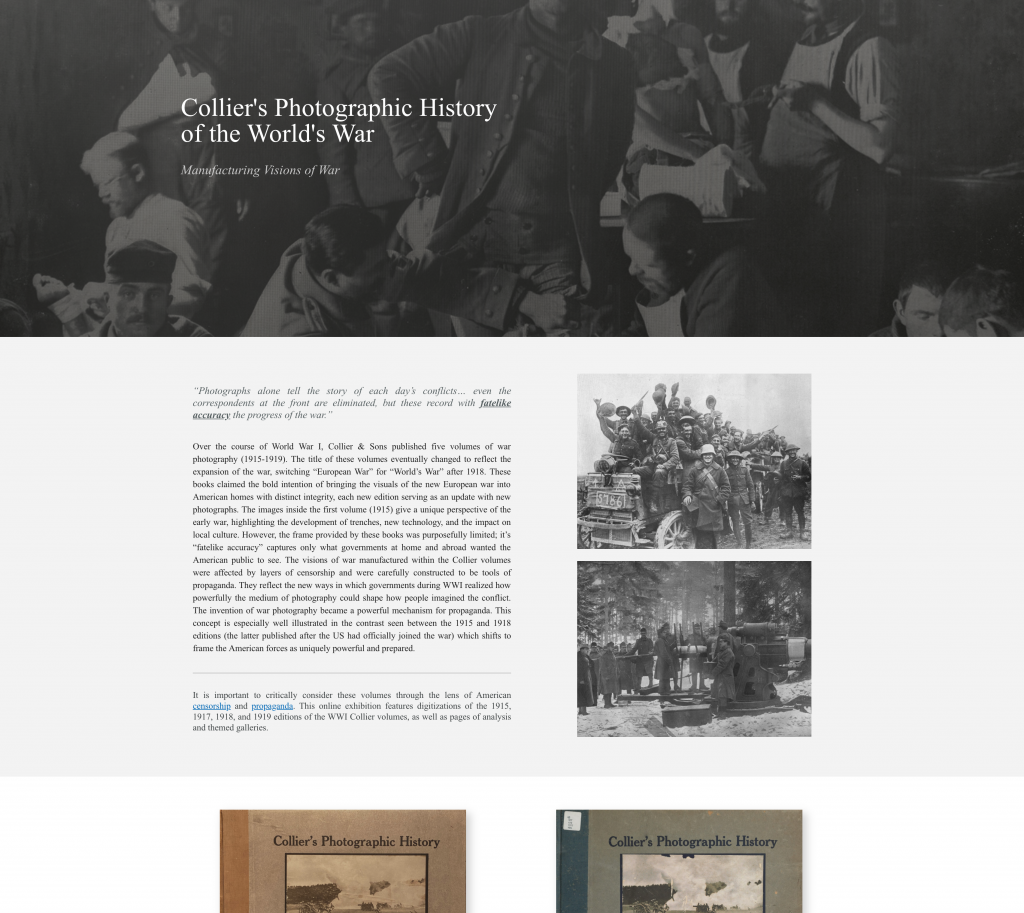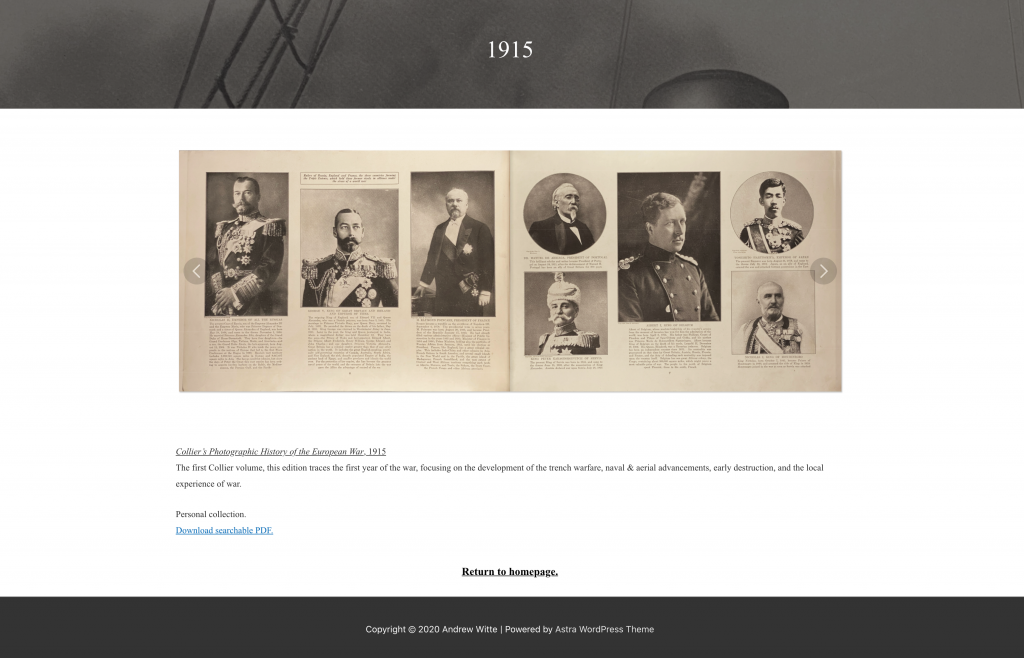by Andrew Witte
Collier’s Photographic History of the World’s War
Manufacturing Visions of War.
Online Exhibition: https://colliersworldswar.dukedh.org/
Over the course of World War I, Collier & Sons published five volumes of war photography (1915-1919). The title of these volumes eventually changed to reflect the expansion of the war, switching “European War” for “World’s War” after 1918. These books claimed the bold intention of bringing the visuals of the new European war into American homes with distinct integrity, each new edition serving as an update with new photographs. The images inside the first volume (1915) give a unique perspective of the early war, highlighting the development of trenches, new technology, and the impact on local culture. However, the frame provided by these books was purposefully limited; it’s “fatelike accuracy” captures only what governments at home and abroad wanted the American public to see. The visions of war manufactured within the Collier volumes were affected by layers of censorship and were carefully constructed to be tools of propaganda. They reflect the new ways in which governments during WWI realized how powerfully the medium of photography could shape how people imagined the conflict. The invention of war photography became a powerful mechanism for propaganda. This concept is especially well illustrated in the contrast seen between the 1915 and 1918 editions (the latter published after the US had officially joined the war) which shifts to frame the American forces as uniquely powerful and prepared.
It is important to critically consider these volumes through the lens of American censorship and propaganda. This online exhibition features digitizations of the 1915, 1917, 1918, and 1919 editions of the WWI Collier volumes, as well as pages of analysis and themed galleries.

Home page screenshot

1915 page screenshot

Women in War page screenshot
1915 page screenshot
—
Course: Virtual Museum (ArtHIST 305)
The future of museum is on the immateriality, affordances, interactions, processes, artificial organisms, cyber-spaces. After an era of museography, of inorganic taxonomic museums, the short life of virtual museums, the future will be on cyber-museums: borderless, distributed, embodied and able to reproduce new knowledge in different forms, layout and rhizomes. The Internet of Things, augmented reality technologies, new data analyses of artifacts, virtual reality systems, body sensors and simulations associated to new forms of engagement are going to transform missions, roles, goals and communication of museums and collections. The transformation of museums in more dynamic, flexible and open institutions is a challenge of this century and, more importantly, this trend generates new job positions and different professional profiles at the level of cultural resource management, museum communication and technological research.
In the pandemic period all the major museums changed their look, offered a more articulated visualization of on line collections and increased the digital content. Is this a new era of virtual pandemic museums? Does this period create new forms of virtual learning and museum entertainment?
Questions (among others) we will debate along the semester: what is the role of virtual museums in the pandemic era? Is there a difference between digital and virtual museums? What about virtual communication for cultural heritage? How to design a virtual museum for the future? How can we browse and study virtual collections?